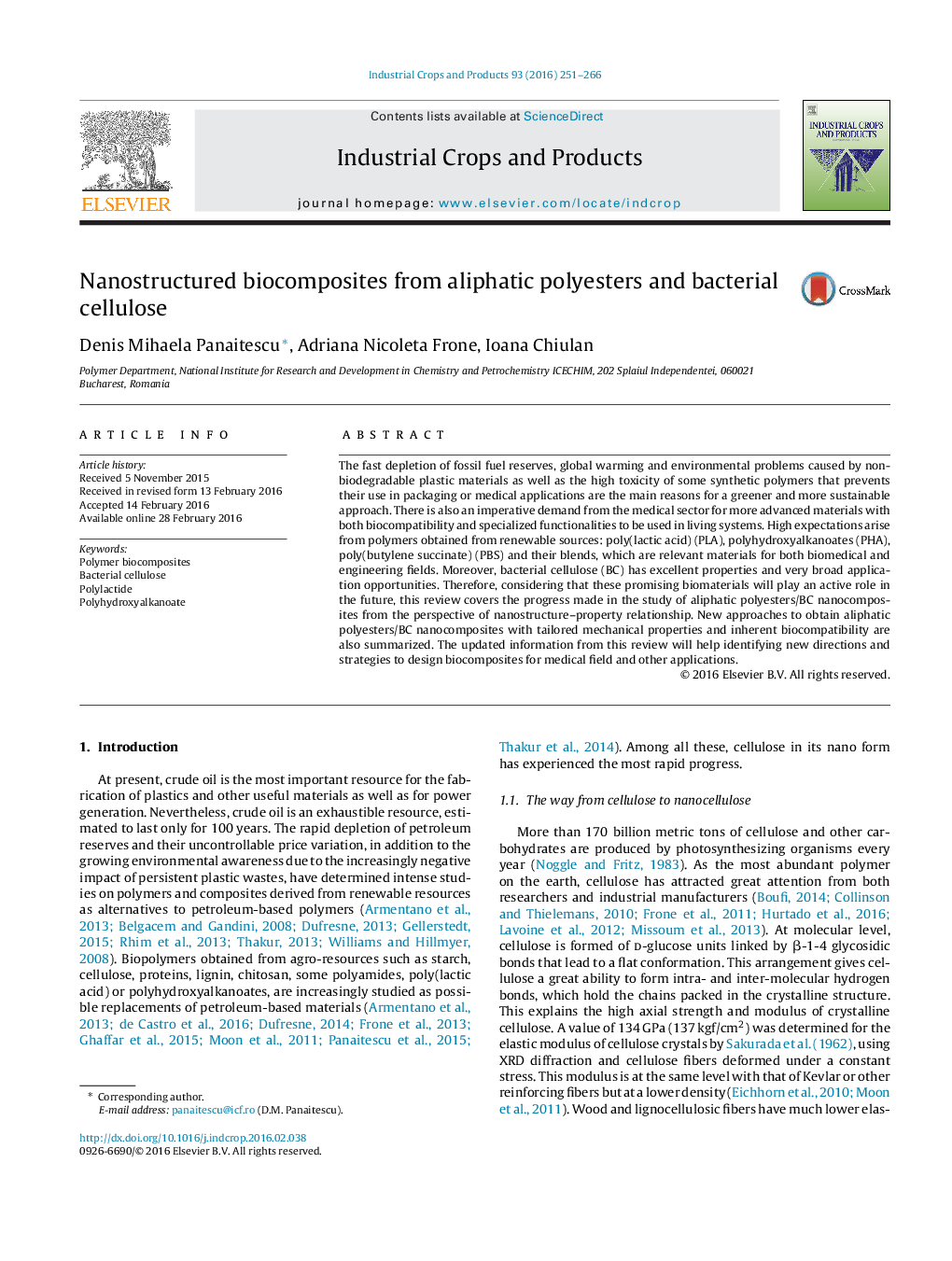| Article ID | Journal | Published Year | Pages | File Type |
|---|---|---|---|---|
| 4512076 | Industrial Crops and Products | 2016 | 16 Pages |
•A critical review on bacterial cellulose (BC)/aliphatic polyesters nanocomposites.•Combining aliphatic polyesters with BC can generate new and improved properties.•The reinforcing effect of BC as pellicle, defibrillated or nanowhisker was reviewed.•New directions in BC/aliphatic polyesters nanocomposites research were proposed.
The fast depletion of fossil fuel reserves, global warming and environmental problems caused by non-biodegradable plastic materials as well as the high toxicity of some synthetic polymers that prevents their use in packaging or medical applications are the main reasons for a greener and more sustainable approach. There is also an imperative demand from the medical sector for more advanced materials with both biocompatibility and specialized functionalities to be used in living systems. High expectations arise from polymers obtained from renewable sources: poly(lactic acid) (PLA), polyhydroxyalkanoates (PHA), poly(butylene succinate) (PBS) and their blends, which are relevant materials for both biomedical and engineering fields. Moreover, bacterial cellulose (BC) has excellent properties and very broad application opportunities. Therefore, considering that these promising biomaterials will play an active role in the future, this review covers the progress made in the study of aliphatic polyesters/BC nanocomposites from the perspective of nanostructure–property relationship. New approaches to obtain aliphatic polyesters/BC nanocomposites with tailored mechanical properties and inherent biocompatibility are also summarized. The updated information from this review will help identifying new directions and strategies to design biocomposites for medical field and other applications.
Graphical abstractFigure optionsDownload full-size imageDownload as PowerPoint slide
